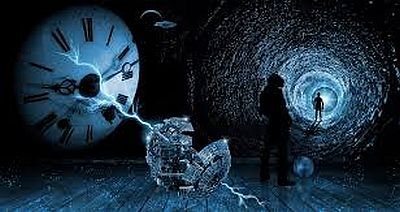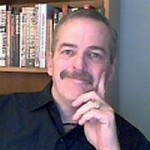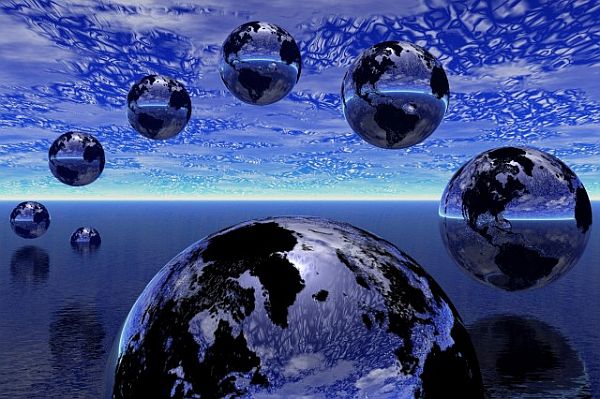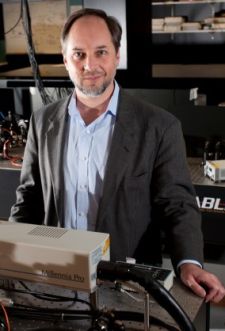 Brendan D. Murphy – The eminent physicist and co-founder of string theory, Michio Kaku, has actually said:
Brendan D. Murphy – The eminent physicist and co-founder of string theory, Michio Kaku, has actually said:
“[I]f you have a radio in your living room… and you have all frequencies in your living room; BBC, Radio Moscow, ABC, but your radio is tuned to one frequency — you’re decohered from all the other frequencies. You’re only coherent [wave phase and amplitude in alignment; either exactly or in whole number ratios] with one frequency. We now believe that the universe is vibrating and that there are vibrations of other universes right in this room. There are the universes of dinosaurs because the comet didn’t hit 65 million years ago; the wave function of aliens from outer space looking at the rubble of an earth that already was destroyed — all in your living room, except we have decohered from them. We’re no longer in tune with them, we don’t vibrate with them…[P]robably there are other parallel universes in your living room and believe it or not this is called modern physics…get used to it. This is the modern interpretation of the quantum theory, that many worlds represents reality.”[i]
Not long ago, almost anyone who uttered such a sentiment would have been dismissed by many as “New Age-y,” “flaky,” and so on, but it is no longer feasible to use such convenient rationalizations with physicists of Kaku’s credibility speaking as a clairvoyant or mystic might. In fact, identical sentiments have been put forth by theosophists a century and more ago in describing the astral plane, which interpenetrates the physical plane without either realm’s inhabitants being aware of the other, “whose senses are normally capable of responding to the undulations of their world only.”[ii]
In 1953, Aldous Huxley, having experimented with ingesting hallucinogens such as mescaline, psilocybin, and LSD, suggested that the function of the brain, nervous system, and sense organs is primarily eliminative rather than productive, operating as a “reducing valve” that protects us from being overwhelmed and confused by a mass of useless and irrelevant knowledge, leaving only the tiny selection likely to be practically useful.[iii] The eminent psychiatrist Stanislav Grof, who has researched the effects of LSD on consciousness extensively, has expressed agreement with this “reducing valve” way of looking at the brain.[iv] By the time of publication of his book The Holotropic Mind in 1993, Grof had completed some 24,000 altered state sessions with clients and patients—no small body of evidence to substantiate his view. In 1983, Swiss scientist Albert Hoffman, who first synthesized LSD (and experimented with it on himself), expressed the view that LSD, by altering the brain’s chemistry, tunes it to other wavelengths from its usual one, thus allowing other realities to enter into one’s awareness.[v] Continue reading →
 Joseph P Farrell – Ms. K.M. shared this one from our friends at phys.org, and it is, if I may employ the expression, a whopper-doozie if it should prove to be the case.
Joseph P Farrell – Ms. K.M. shared this one from our friends at phys.org, and it is, if I may employ the expression, a whopper-doozie if it should prove to be the case.

 Brendan D. Murphy – The eminent physicist and co-founder of string theory, Michio Kaku, has actually said:
Brendan D. Murphy – The eminent physicist and co-founder of string theory, Michio Kaku, has actually said: